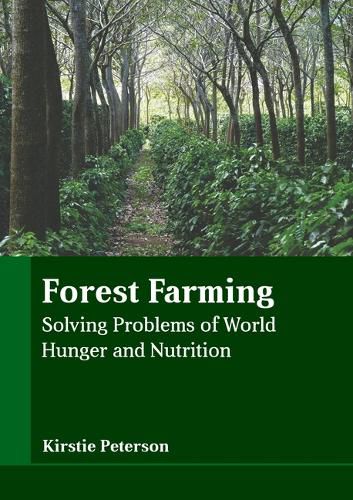Readings Newsletter
Become a Readings Member to make your shopping experience even easier.
Sign in or sign up for free!
You’re not far away from qualifying for FREE standard shipping within Australia
You’ve qualified for FREE standard shipping within Australia
The cart is loading…






Forest farming refers to the practice of cultivating desirable plants beneath a forest canopy. It includes a variety of cultivated systems ranging from adding plants under the timber stands to changing forest stands for improving the sustainability and marketability of existing plants. Forest farming is an agroforestry approach that generates revenue while growing long-lived, high-quality trees for future products or forest conservation. It may provide lucrative opportunities for forest and woodland owners, herb growers, nut growers, and sugar maple growers. There are numerous ways that forests and other tree-based systems support food and nutritional security. Trees directly produce a wide range of healthy foods including leafy vegetables, seeds, fruits, edible oils and nuts, which can help diversify diets and fill the seasonal food and nutritional gaps. The objective of this book is to give a general view on the role of forest farming in solving the problems of world hunger and nutrition. Those in search of information to further their knowledge will be greatly assisted by it.
$9.00 standard shipping within Australia
FREE standard shipping within Australia for orders over $100.00
Express & International shipping calculated at checkout
Forest farming refers to the practice of cultivating desirable plants beneath a forest canopy. It includes a variety of cultivated systems ranging from adding plants under the timber stands to changing forest stands for improving the sustainability and marketability of existing plants. Forest farming is an agroforestry approach that generates revenue while growing long-lived, high-quality trees for future products or forest conservation. It may provide lucrative opportunities for forest and woodland owners, herb growers, nut growers, and sugar maple growers. There are numerous ways that forests and other tree-based systems support food and nutritional security. Trees directly produce a wide range of healthy foods including leafy vegetables, seeds, fruits, edible oils and nuts, which can help diversify diets and fill the seasonal food and nutritional gaps. The objective of this book is to give a general view on the role of forest farming in solving the problems of world hunger and nutrition. Those in search of information to further their knowledge will be greatly assisted by it.